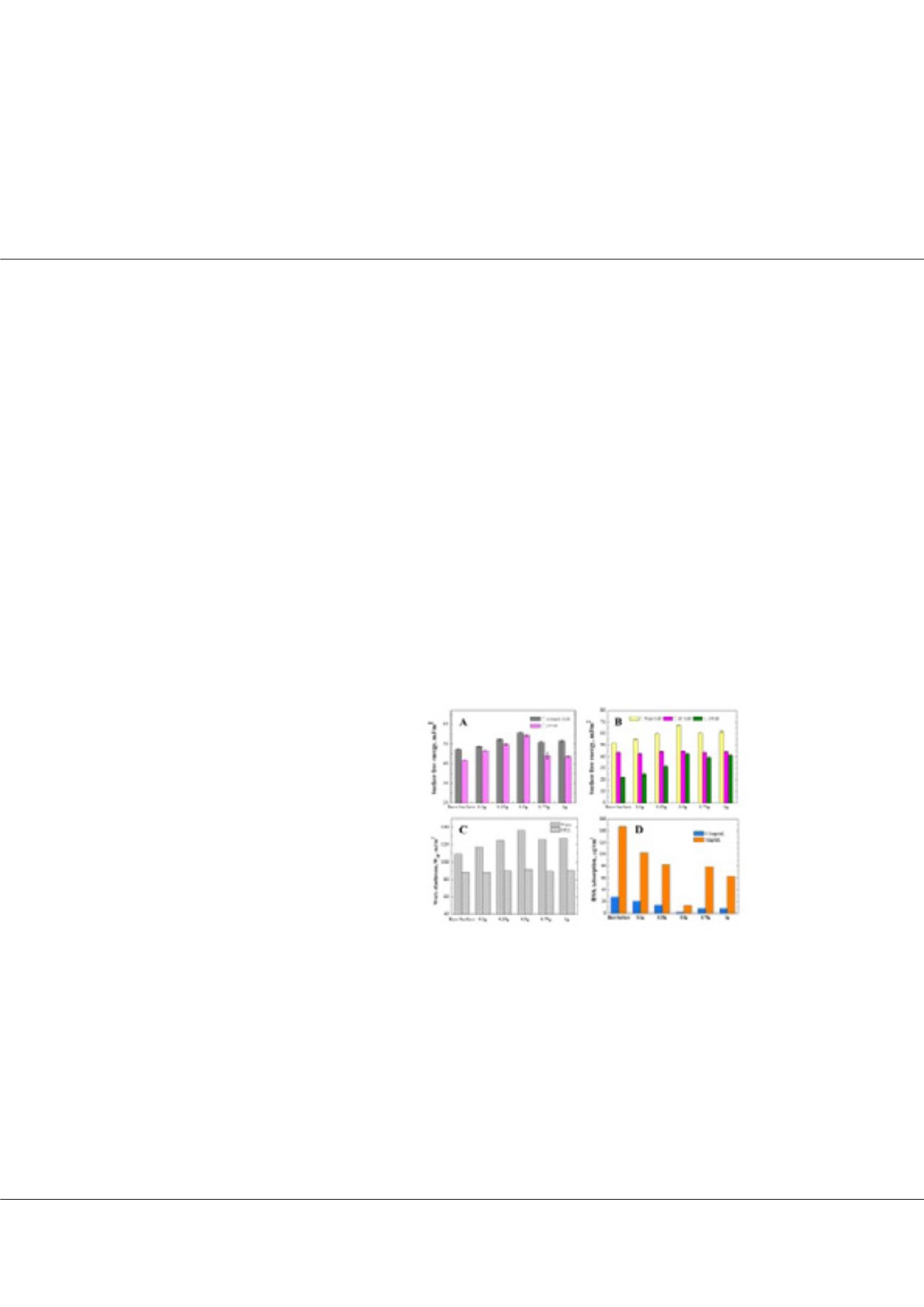

Page 30
Notes:
conferenceseries
.com
Polymer Sciences | ISSN: 2471-9935
October 02-03, 2017 Chicago, USA
3
rd
International Conference on
Polymer Science and Engineering
Fabrication of cell membrane mimic phospholipid polymer brush surface and its protein resisitant property
Yingdi Yan
1
, Ignacio Rodriguez Loureiro
2
, Aleksandra Szcześ
1
and
Emil Chibowski
1
1
Maria Curie-Sklodowska University, Poland
2
Max Planck Institute of Colloids and Interfaces, Germany
A
s a promising method to obtain well designed adaptive biointerfaces, polymer brush has aroused broad interest worldwide.
Surface initiated polymerization (SIP) has been proved an effective way to obtain thick and dense polymer brush. The newly
reported Cu (0) mediated controlled radical polymerization (CuCRP) showed advantanges with repect to lack of toxic halide,
tolenrence to oxygen, little reaction solution consumption and reusage of copper plate as a catalyst. To facilitate the biocompatibility
and suppress unfavourable protein adsorption, 2-methacryloyloxyethyl phosphorylcholine (MPC) was used, the structure of which is
designed to mimic the the main component of biological cell membranes, phospholipid. This is the first time to report PMPC brush
fabrication with SI-CuCRP and investigate the mechanism of protain resistance from the viewpoint of surface free enery analysis.
The polymerization process was tracked by XPS and static contact angle measurement and the surface topography was ananlyzed
by optical profilometer and AFM. The growth rate of the polymer brush is extremely high and the film thickness could be adjusted
by reaction variability, e.g. monomer concentration and reaction time. The graft density was calculated with the help of ellipsometry
measurement in dry (0% humidity) and wet (>96%) conditions and its dependence on the monomer concentration and swelling
ratio was found. The hydrophilicity was analyzed by surface free energy and its components calculation based on LWAB and CAH
approaches and its relationship with protein resistant property was established. The total surface free energy was augmented compared
with the untreated surface which are mainly attributed to the polar components increase because the London dispersion interactions
are almost the same in spite of the polymer brush modification. An optimal thickness of PMPC implies protein resistance related to
surface conformation. Probably self-condensation or charged segments being packed inside the film led to weak surface hydration.
Biography
Yingdi Yan obtained her master degree in Zhejiang University in China and her research topic is “The micro-nano structure design of novel superhydrophobic coatings and
their anti-icing& icephobic properties”. Now she is conducting her PhD study at department of physical chemistry- interfacial phenomena, faculty of chemistry, Maria Curie
Sklodowska University with the support of CoWet (Complex Wetting) project from Marie Curie Initial Training Network (Project number 607861). The subject is “Wetting and
electro-kinetic properties of solid supported lipid layers”. Three topics are involved: 1. DPPC mono-/bi- layer deposited on Ti-6Al-4V via spreading and LB/LS method and
investigation on their wettability and biostability, 2. DPPC liposome adsorption on hydroxylappatite, and the electrokinetic properties and wettability of DPPC layers in the
presence of enzymes. 3. Cell membrane mimic phospholipid polymer brush preparation and its anti-fouling property.
yingdi.yan@umcs.plYingdi Yan et al., Polym Sci, 3:3
DOI: 10.4172/2471-9935-C1-002
Figure: (A) Apparant total surface free energy of PMPC grafted
surfaces with different monomer concentration. (B) Individule CAH
surface free energy of PMPC grafted surfaces calculated from water,
diiodomethane contact angles and the electron-donor parameter gs-
calculated from LWAB method. (C) Work of adhesion of water and
diiodomethane to PMPC grafted surfaces; (D) BSA adsorption on the
bare surface and PMPC modified surface.
















